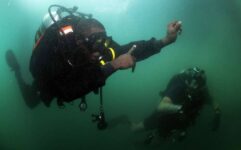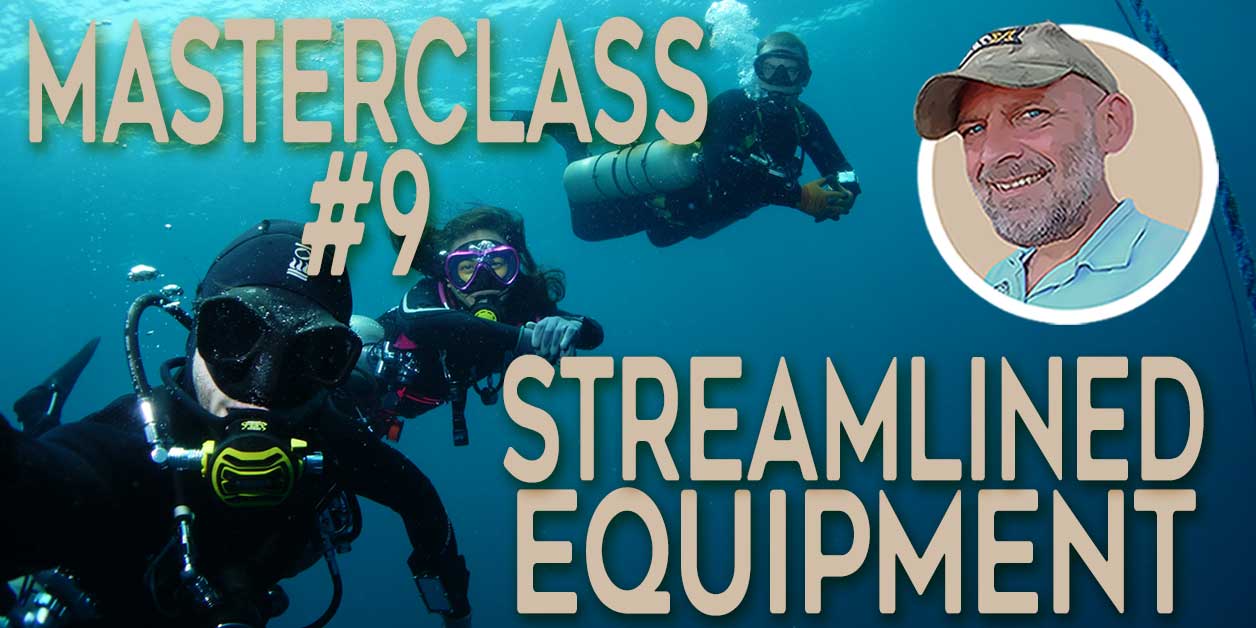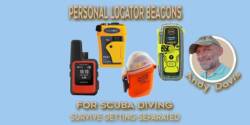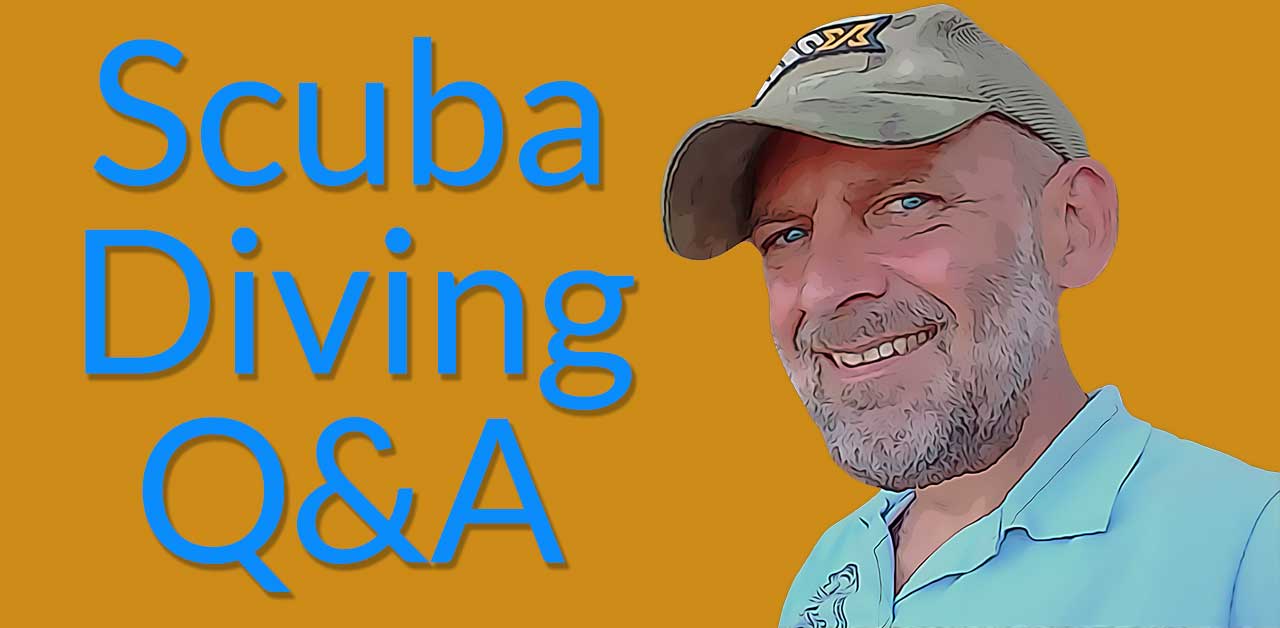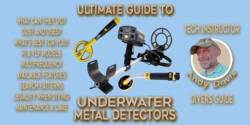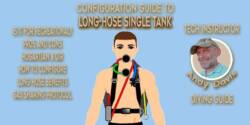How To Use A Pony Cylinder For Diving
What is a pony cylinder?
A pony cylinder is an additional small cylinder carried by scuba divers as a contingency for gas depletion emergencies. A pony cylinder has its own dedicated regulator and is considered a redundant, independent gas source.
Equipping yourself with a pony cylinder increases your self-sufficiency. It enables you to deal with any gas-related emergency without being reliant on a diving buddy to donate their alternate air source or having to resort to last-ditch, less-than-reliable, diving survival skills like the Controlled Emergency Swimming Ascent (CESA).
Diving buddies can prove unreliable, and performing a real-life CESA from realistically deeper diving depths is not the same as doing one on a full breath from 6-9m shallow depths in training.
What are the benefits of a pony cylinder?
Because the diver carries this pony cylinder with them, it is immediately available to them throughout their dive. The diver is self-reliant and their survival does not depend upon the competency of their buddy. They have the physical and psychological security of knowing they can always reach the surface safely if they make a mistake in their gas monitoring or suffer a regulator failure.
While a scuba diver might endeavour to use less gas when scuba diving, there is always the risk of regulator failure or some other unforeseen event that will raise their air consumption rate or delay their bottom time before surfacing.
Experienced divers and instructors consider them highly advisable for wreck diving and also deep diving, which has a more significant risk. High-quality specialist recreational diving courses will typically include tuition on how to use pony cylinders or other redundant gas sources.
See my comprehensive article explaining Deep Diving Risks
Choosing the right pony cylinder
A pony cylinder versus a ‘Spare Air’
A true pony cylinder is different to a Spare Air system. A Spare Air system would be classed as an “emergency ascent bottle”. Despite manufacturer claims, they only provide the typical diver with a few desperate breaths as they rush to the surface, whereas a pony cylinder enabled the diver to conduct a normal safe ascent and safety stop.
The essential difference is that a pony cylinder ends the gas emergency, whereas an emergency ascent bottle may help the diver survive the ongoing emergency.
Spare Air systems don’t end gas emergencies.
Pony bottles do.
How much gas does a pony cylinder provide?
The table below provides metric specifications for the three most popular pony cylinder options; AL19, AL30 and AL40. I have also included the two Spare Air cylinder sizes (3 and 6 cu ft) for comparison.

For greater clarity, I have calculated how many minutes of gas each cylinder would provide during a direct four-minute ascent from 40m/130′ (avg 3 ata) across a range of Surface Air Consumption (SAC) rates.
Cylinder Specs | Spare Air 3 cu ft | Spare Air 6 cu ft | AL19 | AL30 | AL40 |
|---|---|---|---|---|---|
Metric Water Volume | .5L | 1L | 2.7L | 4.3L | 5.7L |
Gas Volume @200 bar | 100L | 200L | 540L | 860L | 1140L |
Gas Duration 10m/min from 40m (4-minute ascent) | |||||
SAC 40L/min | 50 secs | 1.5 min | 4.5 min | 7 min | 9.5 min |
SAC 30L/min | 66 secs | 2.2 min | 6 min | 9.5 min | 12.5 min |
SAC 20L/min | 1.5 min | 3.3 min | 9 min | 14 min | 19 min |
SAC 10L/min | 3.2 min | 6.5 min | 18 min | 28.5 min | 38 min |
From the above table, it is clear to see that the Spare Air systems do not provide sufficient gas; they would empty before reaching the surface. Even if using the larger capacity Spare Air, the diver would need an exceptionally low SAC rate to reach the surface. Low SAC rates rarely happen during diving emergencies. In every instance, a full-size pony cylinder has a sufficient gas capacity to get the diver up safely.
It is worth bearing in mind that a typical recreational-level diver has a routine diving SAC rate between 20-30L/min. That gas consumption rate reduces with experience and as diving skill proficiency improves with deliberate practice.
However, the SAC rate can grow by a factor of 10-20x if the diver becomes psychologically stressed. I have personally observed SAC rates increase by 80-100x in full-blown active panic with heavy exertion.
When considering what size pony cylinder you need, do not base your calculations upon the best-case scenario with a relaxed breathing rate. Assume that psychological stress will have an effect on your respiratory rate during real-world gas depletion emergencies.
Gas Management For Scuba Divers

The comprehensive, illustrated, metric guide to advanced gas planning and management for safer scuba diving. Only $9!
60 Pages. Printable PDF format. Fully Illustrated.
Calculating your SAC rate
Before I describe how to calculate your Surface Air Consumption (SAC) rate, I will caveat that I teach all of my courses using the Metric system. While I do have many students from the USA, all agree that scuba gas planning becomes far more simple when metric calculations are used. I recommend that serious and committed divers make the effort to learn metric gas calculation; it doesn’t take long to crossover and once done it will save you a lot of time and frustration.
SAC calculation the easy way
If you own a diving computer that provides an average depth figure in the dive log it is easy to calculate an accurate SAC rate for your dive/s. You only have to manually record your SPG readings at the start and end of your dive.
This method is more accurate and realistic because it averages your gas consumption over the length of real dives. If you perform this quick calculation after every dive, you will very quickly develop an intuitive understanding of how your gas consumption varies under different diving conditions and levels of exertion.
Four steps to SAC rate calculation
- Calculating gas volume used: (start bar – end bar) x cylinder volume (L)
- Gas consumption at depth per minute (L): gas volume used ÷ dive time
- Convert avg depth to ATA: (avg depth ÷ 10) + 1
- SAC Rate: gas consumption per minute (L) ÷ ATA
Example:
(200 bar – 50 bar) x 11L = 1650L
1650L ÷ 25 minutes = 66L/min
(20m ÷ 10) + 1 = 3 ATA
66L/min ÷ 3 ATA = 22L/min SAC
SAC versus RMV
The gas consumption rate at depth is typically referred to as Respiratory Minute Volume (RMV). This is a medical term and indicates the actual volume of gas respired per minute. This reflects the diver breathing gas from their cylinder at a higher density when underwater. In contrast, SAC is specifically gas consumption at the surface: 1 ata.
SAC calculation the harder way
If you don’t have a dive computer that records your average depth on dives, you will have to record your gas consumption in water over a designated period of time at a constant depth. For instance, you could spend 10 minutes finning at 30m/100′ depth and record your SPG readings before and after that 10-minute period. Record that data on a slate or underwater notebook and perform the same calculations as above when you return from the dive.
This method tends to be less accurate because it is a smaller sample size, doesn’t reflect respiratory changes as the dive progresses, and because divers have an inherent tendency to breathe less when making SAC rate recordings. Do remember that you are calculating your SAC rate for safety purposes in gas management; not for bragging rights amongst your diving peers.
Calculating minimum pony cylinder volume for safe ascent
For this calculation, it is prudent to allocate 1 min at bottom depth, a safe 10m/min ascent rate, and completion of a 3 min safety stop at 5m, followed by an ascent to the surface at a slower 5m/min ascent rate.
This calculation is known as Rock Bottom Gas Management. It incorporates the conservative assumption that the diver/s require some time at the bottom depth to gather their senses or deal with any issues before initiating their ascent. It also plans for the diver to ascend at a normal safe ascent rate, completing their safety stop and then ascending at half normal ascent speed to the surface.
In this example, I have assumed the diver has a SAC rate of 30L/min (lower than average) and a bottom depth of 30m/100.
Ascent Phase | Avg Depth | ATA | SAC | RMV | Time | Gas Vol Consumed |
|---|---|---|---|---|---|---|
1 min bottom | 30m | 4 | 30L/min | 120L/min | 1 min | 120L |
Ascent to safety stop | 17.5m | 2.75 | 30L/min | 82.5L/min | 2.5 min | 206L |
3 min safety stop | 5m | 1.5 | 30L/min | 45L/min | 3 min | 135L |
Ascent from stop | 2.5m | 1.25 | 30L/min | 38L/min | 1 min | 37.5L |
Total gas 499L | ||||||
(depth–stop depth) ÷2 + stop depth | (Depth÷10) +1 | Diver calculated | ATA x SAC | Time at Avg Depth | RMV x Time |
Using that example of SAC 30L/min, we can see that an AL19 (540L) pony cylinder is just sufficient for a safe ascent from 30m/100′ depth.
Do, however, consider that the psychological stress of dealing with a real out-of-gas emergency could substantially increase the diver’s SAC. It is worth considering using a larger cylinder as a contingency for diver stress in an emergency.
Any diver considering doing training for wreck penetration diving should endeavour to develop robust fundamental diving skills and their ability for stress management. That training is usually only delivered on higher-quality training courses. You get what you pay for.
Improved fundamental diving skills will reduce your overall SAC rate, whilst developing stress management and resiliency will help prevent your SAC rate from becoming dangerously exaggerated when things eventually go wrong.
See my article How To Use Less Air When Scuba Diving
Gas Management For Scuba Divers

The comprehensive, illustrated, metric guide to advanced gas planning and management for safer scuba diving. Only $9!
60 Pages. Printable PDF format. Fully Illustrated.
When is using a pony cylinder recommended?
A pony cylinder can be considered insurance against losing your gas supply on a dive. That can happen for a number of predictable reasons; including regulator failure or a loss of situational awareness in SPG monitoring.
There are a few specific circumstances where a pony cylinder becomes a very prudent addition to your dive gear. It is work noting that some dive training agencies actually mandate pony cylinders for specialist higher-level training; such as cavern, wreck and deep diver courses.
Sadly, many dive training agencies still do not include or require pony cylinder training on those courses; primarily to keep course costs lower and increase sales volume.
Cold water diving
In very cold water the risk of free-flow increases due to ice formation inside the regulator’s first stage. A free flow at depth can easily deplete your primary diving cylinder before reaching the surface.
High-quality regulators designed specifically with cold-water diving features reduce the incidence of these failures, but cannot eliminate them altogether. Don’t leave any regulator sitting around in very cold temperatures before using it for diving. Similarly, don’t test breathe a regulator above water when the temperature is close to freezing. Either of those mistakes can start ice formation inside the first stage before you even get into the water.
Whilst you have the option of alternate air source donation from your dive buddy; this places a far greater demand on their own regulator. That can be enough to cause their regulator to free-flow also. Both divers would soon be out of gas supply.
Entry-level students are taught to breathe from free-flowing regulators. In very cold water this is not an effective solution. The rush of air from the regulator can literally freeze the moisture in your mouth. This happened to me when I was a relatively novice diver. I suffered a free-flow at 36m depth while diving in a freshwater quarry in the depths of winter. Breathing the free-flowing regulator quickly encased my teeth with ice. It was not a pleasant experience. I actually bought my own pony cylinder system immediately after that incident.
Read about this bizarre regulator failure I observed for real.
Deep diving
Recreational deep diving exposes the diver to increasing risks. Gas is consumed quicker, regulators are under higher gas demand, nitrogen narcosis diminishes situational awareness (SPG monitoring and buddy proximity) and shorter no-stop bottom times increase the risk of accidentally incurring emergency decompression stops.
Having a redundant gas supply for recreational deep diving is a very prudent decision. It ensures that you can reach the surface if any foreseeable risk actually presents itself.
See my comprehensive article explaining Deep Diving Risks
Overhead environment diving
Recreational cavern and wreck diving courses may limit penetration to the ‘light zone’ where the exit is observable, but there is a multitude of factors which can impede divers from exiting into open water quickly. Those factors include the loss of visibility, spatial disorientation, entanglement and entrapment.
Air-sharing with a buddy can also be more problematic in overhead environment diving. The divers may have to pass through confined spaces where they cannot easily swim side-by-side whilst sharing gas.
As a technical-level wreck instructor with three decades of experience, I would not consider entering a wreck without a redundant gas supply available. Yet, I routinely observe novice divers contentedly penetrating wrecks with a single cylinder. It is hard to appreciate risks until you’ve actually encountered them. Sadly, for some divers each year, they don’t survive those encounters in order to learn the lessons.
See my article on Pony Cylinders And Wreck Diving
How is a pony cylinder set up and configured?
There are two common methods for carrying a pony cylinder; clamped to the primary cylinder at the rear or hung by boltsnaps from D-rings on the divers’ BCD at the front.
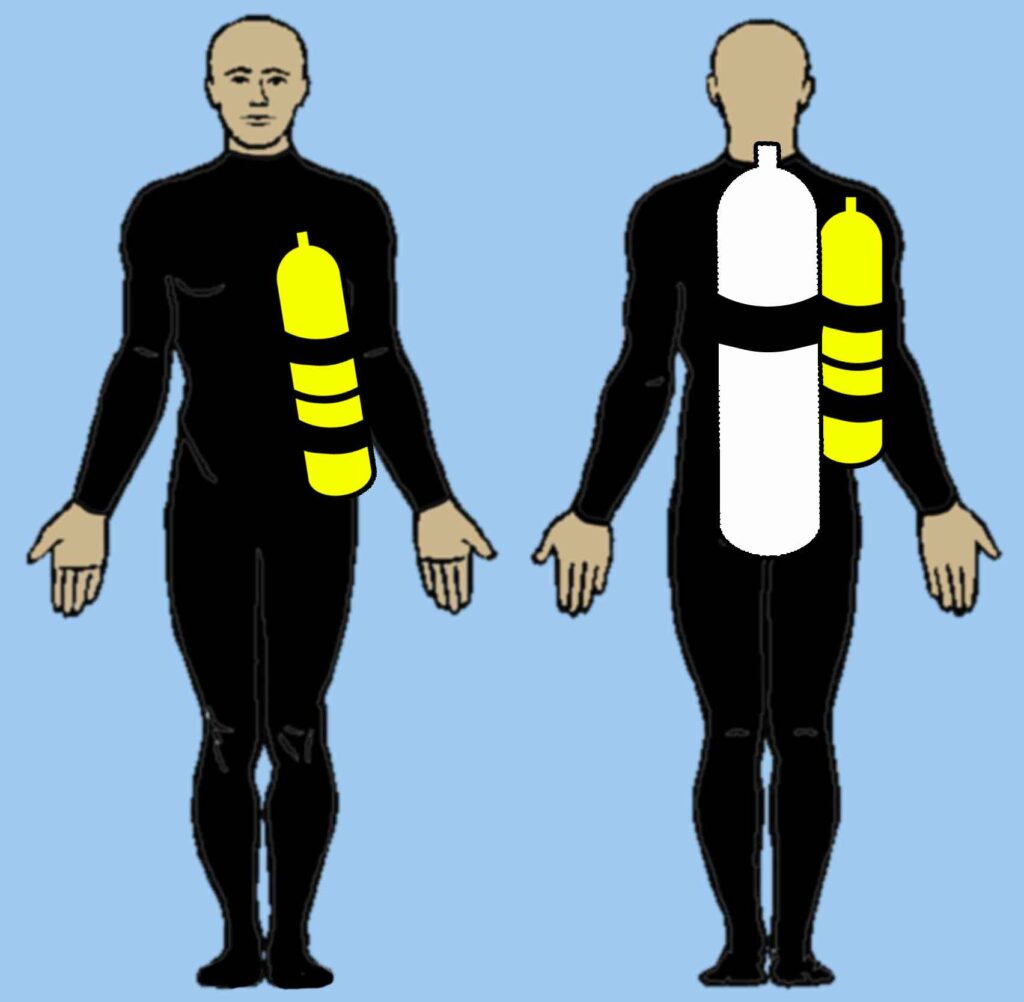
The pony cylinder clipped to the front BCD D-rings
Clipping a pony cylinder to the front of the BCD, via shoulder and waist D-rings, tends to be more popular with experienced divers. This method gives a lot more flexibility; including the ability to observe any leaks from the system, retain clean hose routing and detach the cylinder at any time during the dive; enabling it to be donatable to other divers should the need arise.
To configure a pony cylinder for front carry, you can buy a stage bottle kit. These include bolt snaps at the neck and side of the cylinder, along with a worm-type clamp, nylon carrying handle and rubber hose retainer bands. You could also make your own stage bottle kit from rope and individual hardware components bought from a dive shop.
Backplate/wing-style BCDs are an ideal choice if using pony cylinders with this configuration; the harnesses have the D-rings in the right places.
For wreck penetration, having the pony cylinder in front can also avoid delicate equipment from suffering accidental collisions with the wreck.
Pros
- The cylinder valve can be manipulated during the dive
- Gas leaks can be seen
- No hose clutter
- Removeable and donatable during the dive
Cons
- Needs sturdy BCD D-rings as attachment points
- Slightly more complex to use
The pony cylinder clamped to the primary cylinder
Clamping the pony cylinder to the primary tank at the rear is a very popular option with recreational divers. The location is unobtrusive, but care has to be taken to differentiate the pony cylinders’ SPG and regulator second stage from the divers’ primary ones. Confusion could lead to a gas depletion emergency.
This method does not demand sturdy D-rings on the BCD shoulder and waist straps. The diver cannot manipulate the pony cylinder valve, so they cannot shut it down if it leaks, or open it in water if they neglect to turn it on pre-dive.
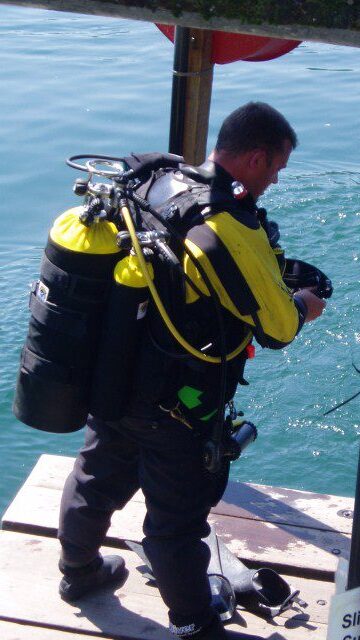
Pros
- Doesn’t require a BCD with shoulder and waist D-rings.
- Unobtrusive location
Cons
- No access to the cylinder valve
- More hose clutter when diving
- Risk of confusion with primary cylinder regulators
You can purchase a variety of metal or nylon webbing clamp systems to secure pony cylinders onto your main tank.
In general, metal clamps are preferable because they are more robust. Some models feature quick-release brackets.
You can purchase a variety of metal or nylon webbing clamp systems to secure pony cylinders onto your main tank.
In general, metal clamps are preferable because they are more robust. Some models feature quick-release brackets.
What regulators to use with pony cylinders?
A regulator used with pony cylinders consists of a first-stage, second-stage and an SPG. You can use a full-size SPG, or some divers are content with a button-sized gauge. I do not advise using button gauges on a rear-mounted pony cylinder; you should be able to monitor the gauge at all times.
A 6-9“ high-pressure SPG hose is ideal for front-staged pony cylinders. For back-clamped ponies, a full-size 30“ HP hose is necessary.
A few diving manufacturers sell dedicated regulator sets for use with pony cylinders. These tend to be cheaper, but also lower quality and performance than primary regulators. Otherwise, you can make your own pony regulator; you just need a first stage, second stage and SPG.
The main criterion for buying a pony cylinder regulator is reliability. The system is for emergencies and, if needed, your life will rely upon it.
Gas Management For Scuba Divers

The comprehensive, illustrated, metric guide to advanced gas planning and management for safer scuba diving. Only $9!
60 Pages. Printable PDF format. Fully Illustrated.
About The Author

Andy Davis is a RAID, PADI TecRec, ANDI, BSAC, and SSI-qualified independent technical diving instructor who specializes in teaching sidemount, trimix, and advanced wreck diving courses.
Currently residing in Subic Bay, Philippines; he has amassed more than 10,000 open-circuit and CCR dives over three decades of challenging diving across the globe.
Andy has published numerous diving magazine articles and designed advanced certification courses for several dive training agencies, He regularly tests and reviews new dive gear for scuba equipment manufacturers. Andy is currently writing a series of advanced diving books and creating a range of tech diving clothing and accessories.
Prior to becoming a professional technical diving educator in 2006, Andy was a commissioned officer in the Royal Air Force and has served in Iraq, Afghanistan, Belize, and Cyprus.
In 2023, Andy was named in the “Who’s Who of Sidemount” list by GUE InDepth Magazine.
Purchase my exclusive diving ebooks!
Originally posted 2018-03-07 23:56:22.







